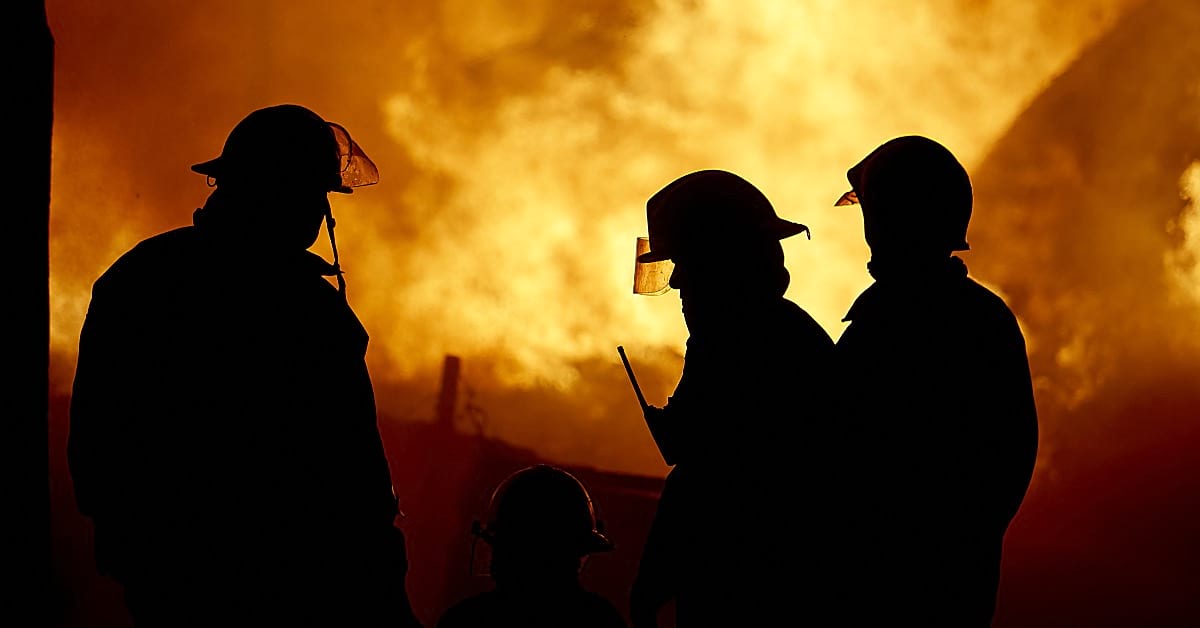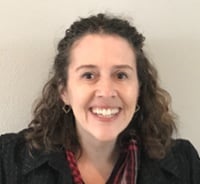You’ve probably seen a blogpost or two in your lifetime about the importance of clear communication in the workplace. Most likely, efficiency, productivity, and building a healthy, non-toxic culture come up at the top of the list.
But to frontline workers of every variety, clear communication is more than just this: it’s life or death, either for them or the people they serve. And sometimes it means the difference between making a living and losing a job.
According to one simulation study conducted in a hospital environment, “Errors of communication have been frequently cited as significant contributors to patient injury, with some reports suggesting that 60% to 70% of errors are communication related.”
Inefficiencies in communications can have dire consequences outside of the hospital setting, too. Construction workers who can’t hear a safety update put their life and limb on the line. Truck drivers who miss critical information about a delivery risk missing delivery windows and wasting time—an important consideration, given that they’re not paid by the hour.
People across the globe—from the US to Hungary to Saudi Arabia and beyond—use Zello when they want to replace their crackly, unreliable radio push-to-talk solutions with efficient, crystal clear communication technology. Zello brings digital push-to-talk into the modern age, saving time—and lives—along the way.
In this post we’ll take a look at just what that means and why it matters.
Casting a Wide Net for Help
Sim Shain is a certified paramedic, the Advanced Life Support Coordinator of Central New Jersey Hatzolah, and the Operations Coordinator for Hatzolah Statewide.
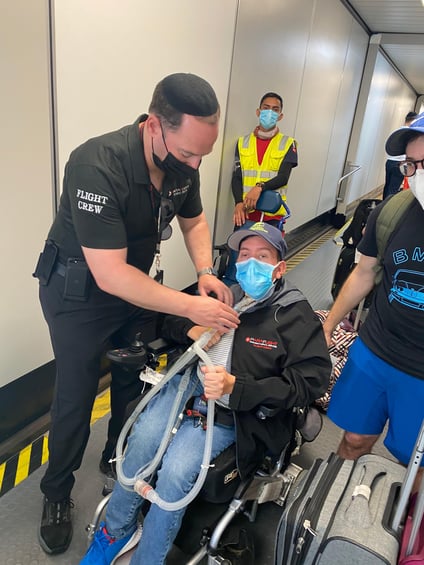
The all-volunteer emergency rescue organization operates a large fleet of ambulances and specializes in responding to emergencies in a way that is attentive to the cultural and religious needs of Orthodox Jews.
However, Hatzolah EMTs and paramedics provide free pre-hospital emergency care to anyone who needs it, regardless of religion, race, or ethnicity.
“Every day we use Zello to save lives,” Sim says. He explains that while the average emergency response time in the US is 15 minutes, Hatzolah aims to respond in just two. And to make that happen, the volunteers in the network across the US get notified of emergencies over Zello.
Recently, a child in a park in Pennsylvania went into anaphylactic shock after eating peanuts. A call went out over Zello to thousands of volunteers. Was anyone nearby? Could anyone help?
“We had 3 members respond in under 5 minutes. We were able to stabilize the child and assist the mom until 911 took them to the hospital,” Sim says.
Read more about how Sim Shain and Hatzolah use Zello to save lives.
Speeding Up Internal Communications in an Emergency Department
In a first-of-its-kind study, researchers set out to evaluate the impact of using a push-to-talk app in the emergency department at the King Abdullah Bin Abdulaziz University Hospital (KAAUH) in Riyadh.
Specifically, the researchers wanted to know how the technology affected the communication, safety and clinical performance of healthcare workers in the emergency department during the COVID pandemic, when there was simultaneously a need to reduce physical contact among staff while increasing communication.
The study included 128 members of the emergency department staff. Participants agreed to use the Zello app on their smartphones for 30 days (the phones were kept in specimen bags to avoid contamination) and then complete an online questionnaire. Doctors, nurses, medical staff, technicians and administrators responded to the survey.
In their principle conclusions, researchers stated that using the Zello technology led 75% of respondents to report significant improvements in communication among the emergency department staff.
More specifically, 76% of participants responded favorably to the statement
“The speed of internal communication in the department has been improved.” And 79% of participants responded favorably to the statement that they observed “Improved physician response times to urgent COVID-19 reporting.”
Read more about the ground-breaking study.
Bridging the Distance in a Sprawling Facility
Daisy Curto is a certified nurse and the Residential Wellness Director at Columbia Cottage Assisted Living Center in Collegeville, Pennsylvania.
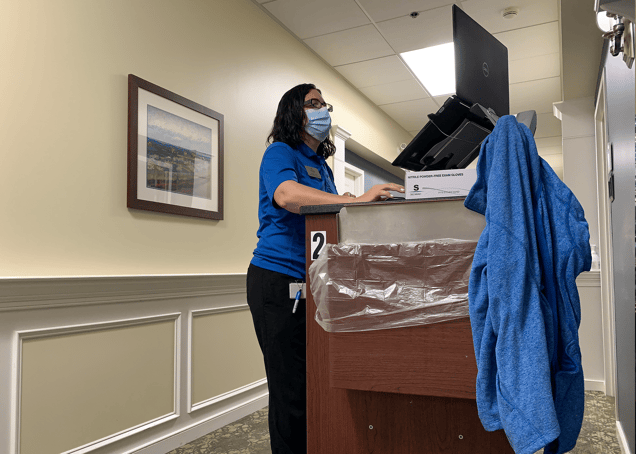
Every morning when Daisy arrives at work, she gets an update on the health status of the 37 residents who range in age from 80-99 years old. Then Daisy begins distributing medications and checking in with the people who call the facility home.
Because Columbia Cottage is laid out in a U-shape, and staff are often busy in resident’s apartments, it was hard for staff to communicate urgent messages before they had Zello.
“If I yelled to someone on the other side of the facility, they would never hear me,” Daisy says. “Plus a lot of the time we work with our residents inside their apartments. This is why we use Zello to communicate with each other.”
Not too long ago, the Certified Nursing Assistant (CNA) was visiting with a resident, who complained of pain in her abdomen. The CNA put out a call over Zello, and Daisy was able to rush over to the room. Once there, Daisy made a quick assessment and urged the woman to go to the hospital.
At the hospital, the doctor diagnosed an urgent gallbladder problem requiring immediate attention. Thanks to quick and efficient communications between Columbia Cottage staff, the woman got to the hospital in time.
“Without Zello, the CNA would have had to go all over the facility looking for me, and I was on the whole other side of the property at the time. Thanks to Zello, I was able to immediately attend to the resident in need,” Daisy explains.
Read more about how Daisy the staff at the Columbia Cottage Assisted Living Center use Zello to ensure high quality healthcare.
Providing Uninterrupted Patient Care
Candis Kokoski is one of the Co-Clinical Leader Managers in the Emergency Department at St. Michael’s Hospital in Toronto, Canada. Candis is responsible for supporting the emergency room staff, which includes a multidisciplinary team of over 200 staff.
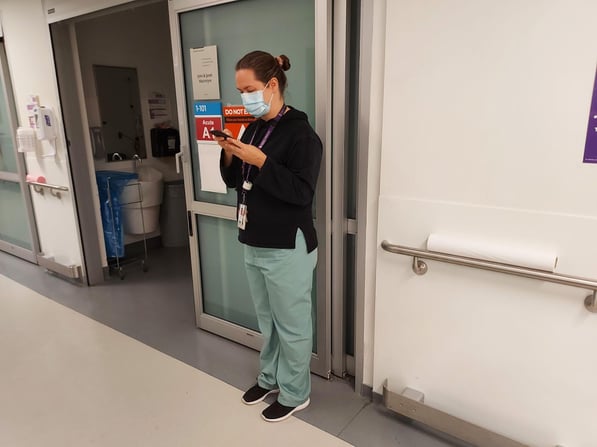
Up until early 2020, clinical staff would communicate with each other via desk phones or the phone connected to the nurses’ Workstation on Wheels (“WOW”). Direct patient care was interrupted in the minute it took for a member of the clinical team to leave a patient room to place a call.
But now, with Zello, Emergency Department staff don’t need to leave a patient’s side to answer a call from a colleague. Candis explains that Zello has been especially valuable since COVID arrived along with a new protocol: any staff entering a patient room needs to don PPE and then take it off when they leave.
“Now that staff is in PPE, they can call for help or for things they need in the room, without having to leave the patient. They can get assistance right away wherever they are,” she says.
Zello has also helped more nurses and clinical staff stay with patients when a Code Stroke is called. Prior to using Zello, a team leader would call Code Stroke over the intercom, requiring a float nurse and clinical assistant to go to the stroke center in anticipation of an arriving patient. However, often this meant that more float nurses and clinical assistants than were needed left their patients to report. There wasn’t an efficient way to coordinate.
Today with Zello, the float nurses and clinical assistants use Zello to assign specific personnel to respond to any given Code Stroke. The others are able to remain by their patients’ sides providing critical care without interruption.
Read more about how Candis and St. Michael's Hospital are using Zello to optimize patient care.
Gathering Data for an Urgent Search and Rescue Operation
Mike White founded CommsConnectUS (CCUS) after a 35-year career in urban fire/EMS/law enforcement and emergency management.
The organization has a vast network of thousands of volunteers around the country who support frontline volunteers by gathering on-the-ground information about hurricanes, floods and blizzards; monitoring political events; and fielding emergency requests.
Recently, when Hurricane Ida hit Louisiana and Mississippi, the volunteers flew into action. One of those volunteers is Jacob Harris, the Zello coordinator for CCUS; it’s his job to make sure all the volunteers in the organization know how to use the app in natural disasters like the one he was living through from his home in Louisiana.

Jacob posted a message on Twitter asking people who needed help to contact him via social media or Zello. He was absolutely inundated with pleas for assistance.
While CCUS was working with the Louisiana Cajun Navy to coordinate a response, there was a problem; it was dark and the winds were still dangerously strong for several hours after the storm hit.
Unlike on other social media platforms, Jacob was able to have real-time voice conversations with people in dire straits. Even though he couldn’t send help, he could talk to them and keep them calm until it was safe for the Cajun Navy to reach them.
Meanwhile, Jacob gathered information for each of the thousands of people contacting him and then sent the information to Mike, who was working dispatch for the Louisiana Cajun Navy. Mike put all the details Jacob had gathered into a spreadsheet.
By the time the winds died down, with his spreadsheet in hand, Mike was fully organized and ready to send the Louisiana Cajun Navy teams out in the streets to help the people who needed it most. Having already used Zello to gather the data, Jacob saved CCUS critical hours of organizational time.
Learn more about how CCUS uses Zello to support frontline workers.
Zello: Helping First Responders Save Lives
Anyone who works emergencies knows that fast and efficient communication is essential to getting the best outcomes for the people you’re trying to help.
Zello helps response teams stay unified and connected throughout an emergency.
Using Zello helps an organization cast a wide net to call for help, speeds up internal communications, bridges the distance in sprawling locations, helps medical staff provide uninterrupted care, and enables critical data gathering during a natural disaster so that search and rescue teams can be ready to go.
The result? People in trouble get help faster. That’s the bottom line.
Do you represent a first responder organization? See if you qualify for the Zello for First Responders program, which gives Zello to first responders for free.
